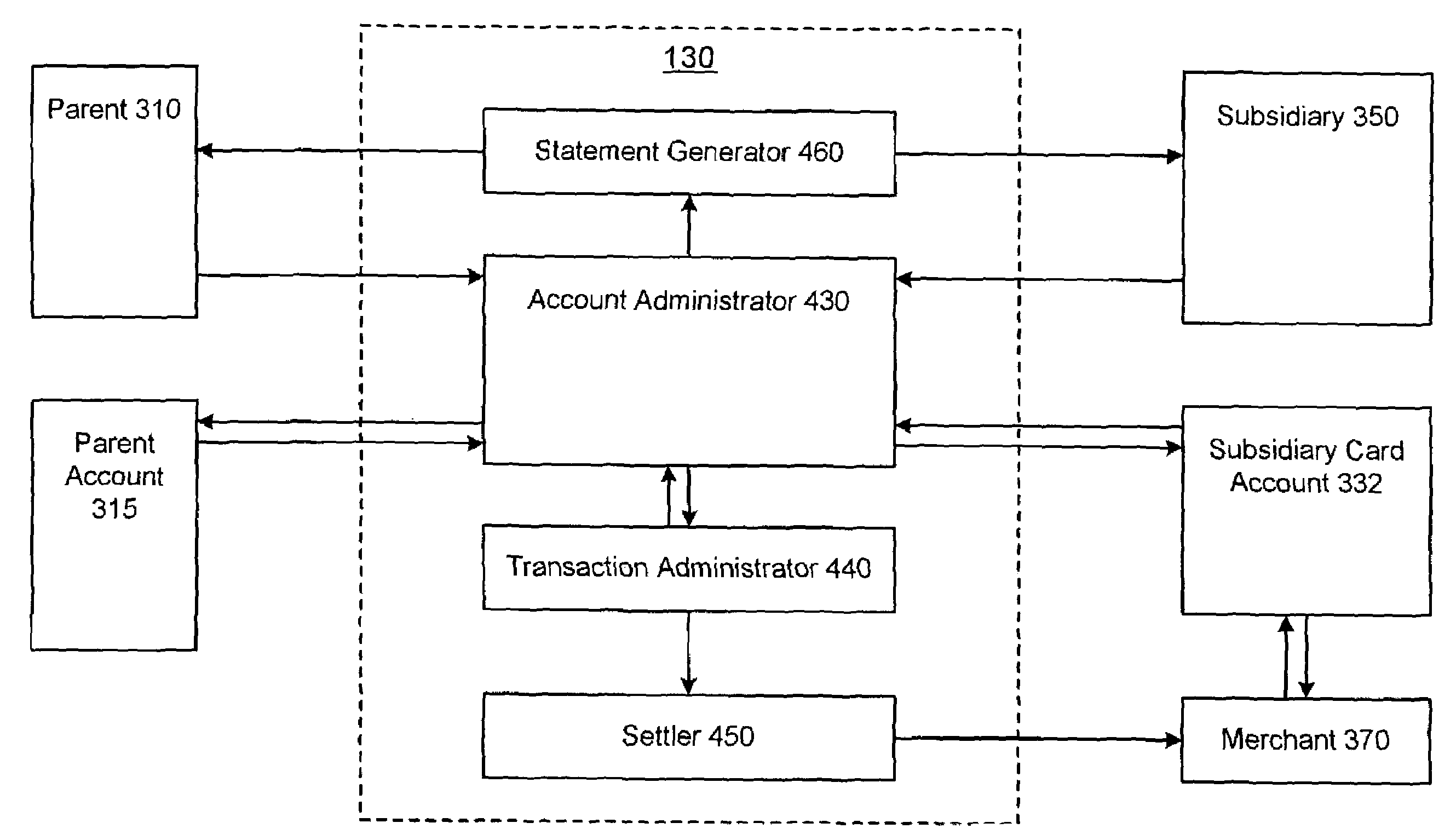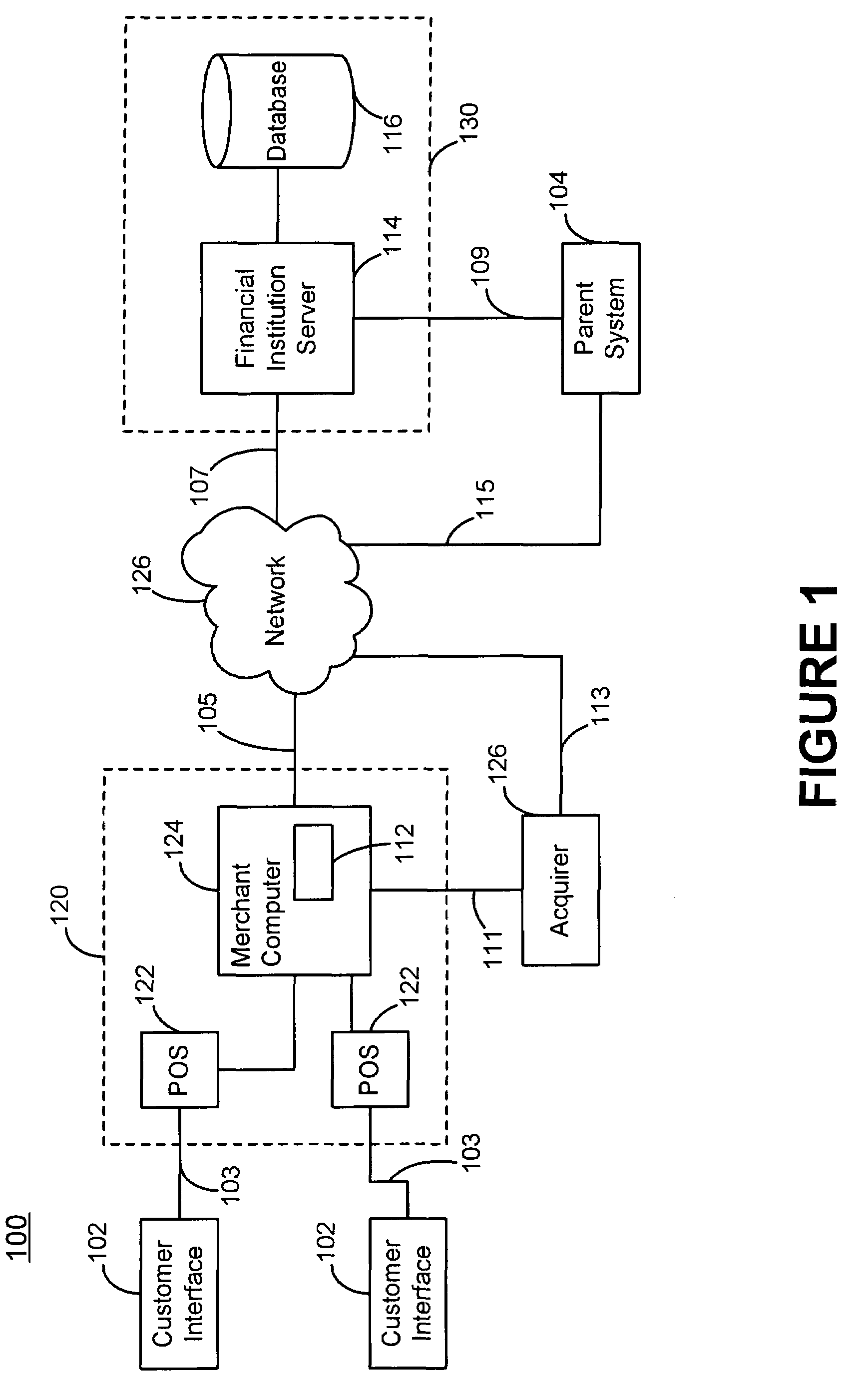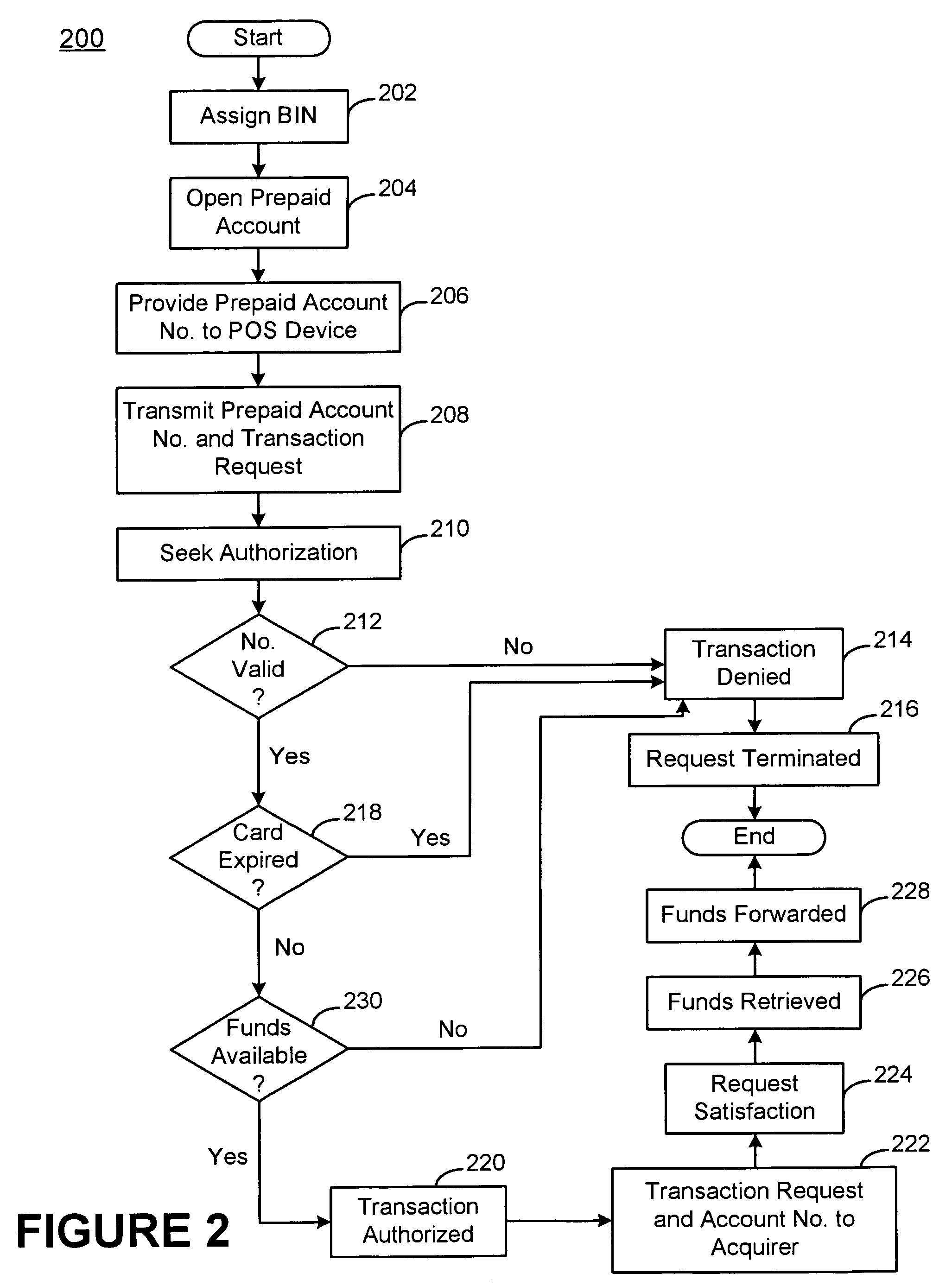System and method for facilitating a subsidiary card account with controlled spending capability
a subsidiary card and spending capacity technology, applied in the field of system for facilitating transactions, can solve the problems of not substantially enabling users to finance their transactions, people or entities may not be able, or may not desire, to acquire traditional credit cards, and parents may not wish that their children have general access to non-emergency funds. , to achieve the effect of facilitating the establishment and issuance of a subsidiary account, facilitating the determination and adjustment of appropriate spending power, and easy and flexible control of the subsidiary
- Summary
- Abstract
- Description
- Claims
- Application Information
AI Technical Summary
Benefits of technology
Problems solved by technology
Method used
Image
Examples
Embodiment Construction
[0029]The present invention is a payment and funding vehicle that is configured to allow a parent and an administrator to provide funds in the form of a credit line (i.e., spending capacity) to a subsidiary. The system thereby facilitates control over the subsidiary's spending capacity and / or debt accumulation. In accordance with one aspect of the invention, a system for administering a subsidiary card account includes a parent and an administrator. The parent, which is responsible for a related credit instrument, e.g., a parent account, is configured to communicate a request to the administrator requesting that a credit card account be issued to a subsidiary. The administrator is configured to receive the request from the parent and to facilitate the establishment and administration of the subsidiary card account so that it may be used by the subsidiary to facilitate transactions. The administrator is also configured to facilitate determination and adjustment of appropriate spendin...
PUM
 Login to View More
Login to View More Abstract
Description
Claims
Application Information
 Login to View More
Login to View More - R&D
- Intellectual Property
- Life Sciences
- Materials
- Tech Scout
- Unparalleled Data Quality
- Higher Quality Content
- 60% Fewer Hallucinations
Browse by: Latest US Patents, China's latest patents, Technical Efficacy Thesaurus, Application Domain, Technology Topic, Popular Technical Reports.
© 2025 PatSnap. All rights reserved.Legal|Privacy policy|Modern Slavery Act Transparency Statement|Sitemap|About US| Contact US: help@patsnap.com



